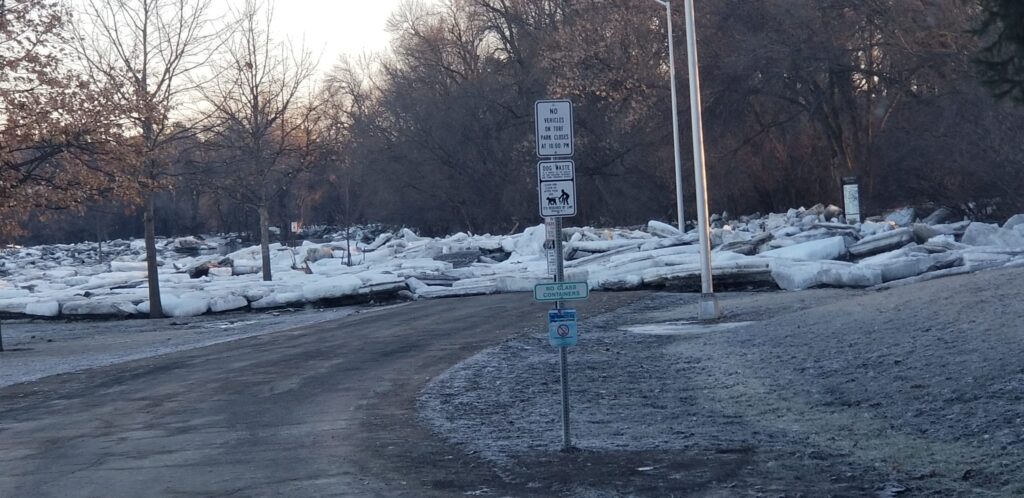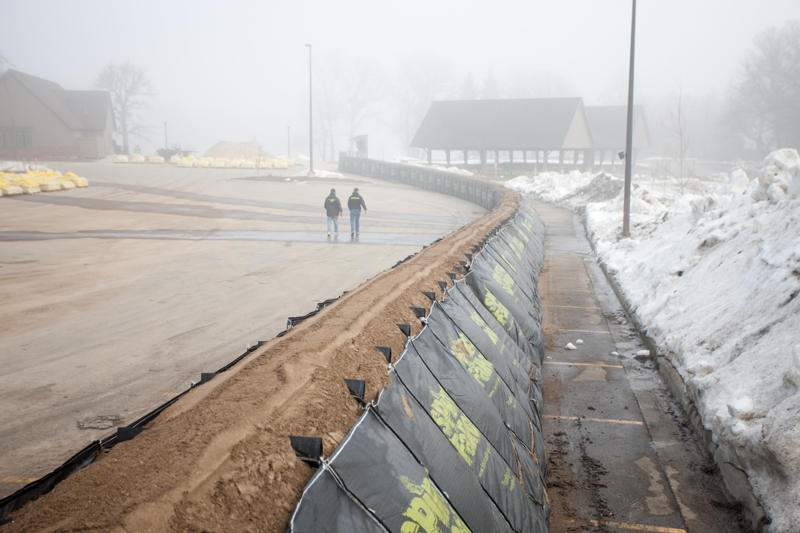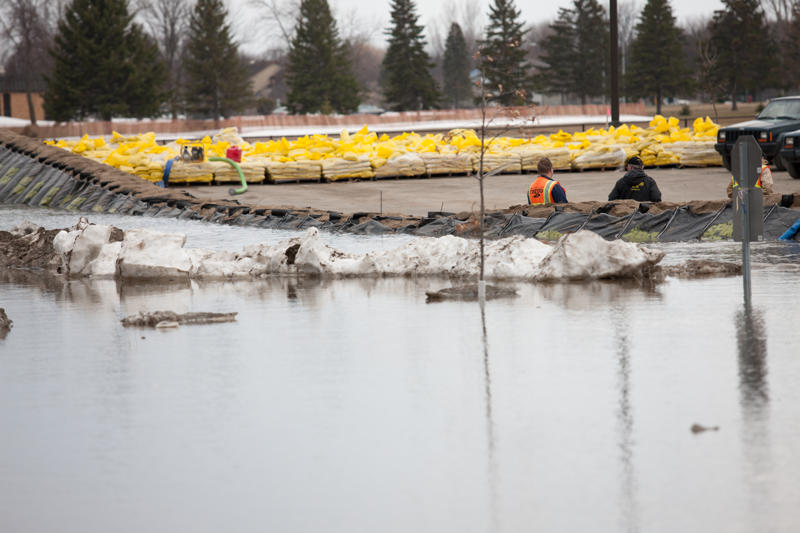Preventing Floods from Ice Jams and Snowmelt
Learn how to prevent ice jam and snowmelt floods with effective flood control measures and TrapBag barriers designed for winter and early spring protection.

Winter flooding can be just as destructive as any storm season—and in many cases, even worse. Ice jams and snowmelt floods can overwhelm rivers, damage infrastructure, and endanger lives with little warning.
Understanding how these events form and how to stop them is vital for municipalities, emergency managers, and contractors tasked with protecting vulnerable areas.
What Is Ice Jam Flooding?
Ice jam flooding happens when chunks of ice pile up against an obstacle such as a bridge, river bend, or narrow channel and block water flow. As the ice accumulates, water levels rise upstream, causing overflow. If the jam suddenly breaks apart, the rapid release can trigger dangerous downstream flooding.
Ice jams typically occur in late winter or early spring when temperatures fluctuate, but they can form any time conditions allow freezing and thawing cycles.

How Does Snowmelt Cause Flooding?
Snowmelt floods develop when warm spring temperatures cause accumulated snow and ice to melt faster than the ground or drainage systems can absorb it. When soil is already frozen, water can’t seep in; it runs off into streams and rivers instead, quickly raising levels.
This rapid runoff can combine with ice jams to create severe flood events that damage roads, bridges, and nearby structures.
Why Ice Jam & Snowmelt Floods Are Dangerous
Frozen Soil and Limited Absorption
In winter and early spring, frozen soil and dormant vegetation can’t absorb excess water efficiently. That means even a moderate thaw can lead to substantial surface runoff.
Infrastructure Damage
Floodwaters from ice jams or snowmelt can destroy pavement, damage bridge supports, and overwhelm drainage systems. Even a single inch of water inside a structure can cause tens of thousands of dollars in damage.
Ice Shoves
Wind and wave action can push slabs of ice onto shorelines, creating ice shoves—towering piles that can crush walls, break windows, and damage roads and utilities. These are common in areas bordering the Great Lakes, Alaska, and Canada.
Flood Prevention Methods for Ice Jams and Snowmelt
Communities use a range of flood control measures to prevent or lessen the impact of snowmelt and ice jam flooding.
1. Ice Management Techniques
- Drilling holes in ice: Helps water flow through frozen layers, reducing pressure buildup.
- Mechanical breakup: Heavy equipment or controlled blasting can break apart jams before they block flow.
2. Temporary Dikes or Dams
Deployable barriers or wall dams help control water direction and keep floodwaters away from populated or high-value areas during thaw periods.
3. Flood Barriers and Containment Systems
Installing temporary flood barriers—like TrapBag barriers—can provide immediate protection during snowmelt floods. These barriers can be set up in hours, not days, to redirect or block rising water.
4. Monitoring and Early Warning
Working with local weather and hydrology teams allows communities to track temperature shifts, river levels, and ice conditions. Early response is often the key to minimizing winter flood damage.

Using TrapBag Barriers for Ice Jam and Snowmelt Flood Protection
TrapBag barriers are a fast, proven way to control water and ice movement during winter flooding events. Each barrier is sloped on one side and vertical on the other, with 60% of its mass concentrated in the lower half—a design that provides superior stability under pressure.
They can be used to:
- Form temporary dikes or wall dams
- Reinforce riverbanks
- Divert floodwater away from infrastructure
- Create containment zones for snowmelt runoff
How TrapBag Works
- Unfold and connect: TrapBags come in 50-foot sections that can be linked to form longer barriers.
- Position: Place the barrier along a riverbank, road, or structure where flooding is expected.
- Fill: Use heavy machinery (such as a front-end loader or skid steer) to fill the cells with sand, gravel, or small rocks.
A small crew can deploy hundreds of feet of TrapBag protection in just a few hours, making it far faster and more reliable than traditional sandbags.
TrapBag barriers have been used worldwide for flood response, erosion control, and storm recovery. They are durable enough to withstand both water pressure and ice impact, making them ideal for snowmelt flood and ice jam protection.
Protect Communities from Winter and Early Spring Flooding
Every year, thaw cycles cause unpredictable snowmelt floods and ice-related flooding. With proper planning and reliable barriers, communities can act quickly to protect people, infrastructure, and the environment. Contact the TrapBag team today to discuss how our barriers can help your community prepare for snowmelt and ice jam flooding.
Frequently Asked Questions
What causes snowmelt floods?
Snowmelt floods occur when warmer temperatures cause snow and ice to melt faster than the ground or drainage systems can absorb it. Frozen soil, saturated ground, and blocked waterways can all increase flooding risk.
How can communities prevent ice jam flooding?
Monitoring river ice, breaking up jams early, and deploying temporary barriers like TrapBags are effective flood control techniques. These methods help manage water flow and reduce pressure on frozen channels.
What is the difference between ice jam flooding and snowmelt flooding?
Ice jam flooding is caused by ice blockages in rivers, while snowmelt flooding is caused by melting snow and ice runoff. Both can occur together in late winter and spring.
How fast can TrapBag barriers be installed?
A small crew using heavy machinery can install hundreds of feet of TrapBag barriers in just a few hours, making them one of the fastest and most effective flood control measures available for winter conditions.
Meet the author
Get the Dirt Before the Flood Hits
Stay ahead of flooding, erosion, and disaster response challenges. The Dirt, TrapBag’s monthly newsletter, delivers field-tested tips, real-world case studies, and the latest in barrier technology straight to your inbox.


